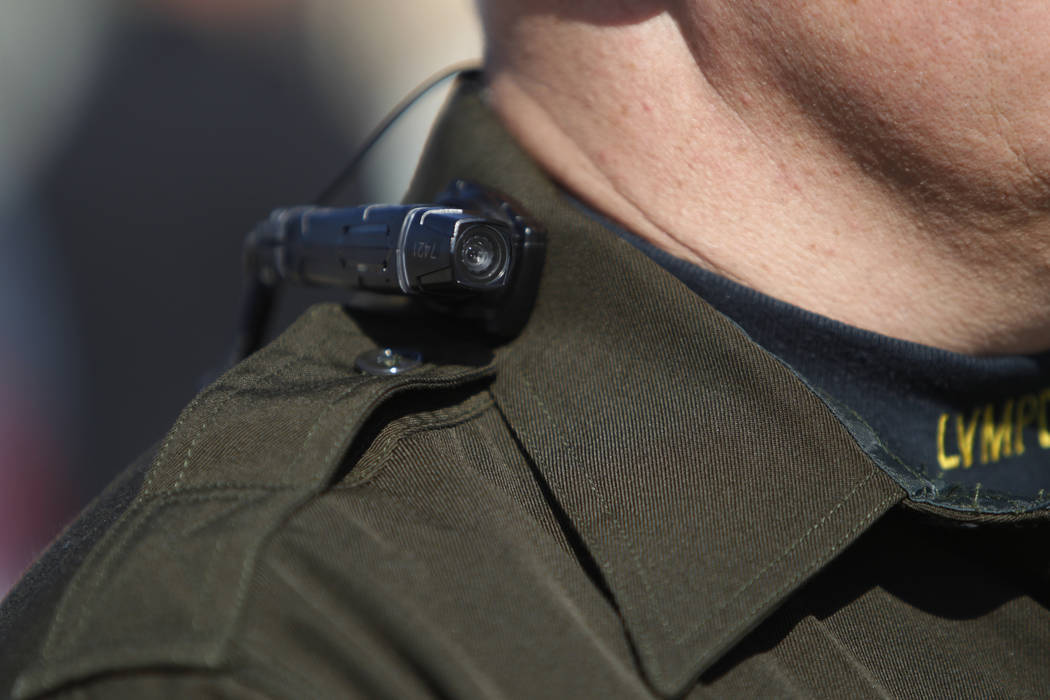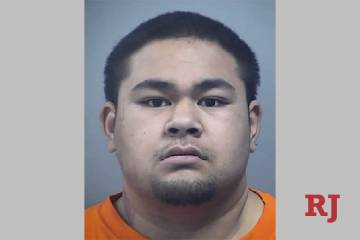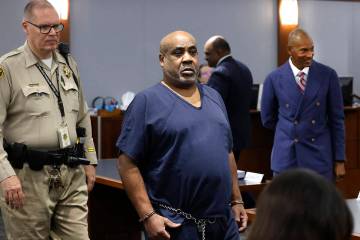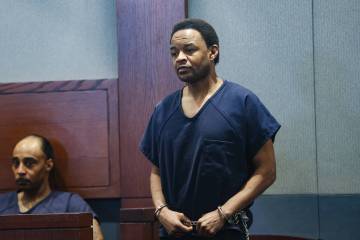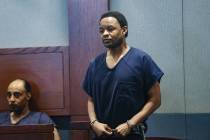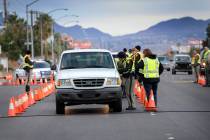Report details how often Las Vegas police follow body camera rules
Las Vegas police officers were cited more than 3,000 times from January through October for failing to comply with body camera requirements, according to a report released by the Metropolitan Police Department.
According to an activation performance report from the department, officers were cited 3,021 times for not meeting an 80 percent compliance rate for turning on their cameras.
“People tend to think the worst, that it’s intentional on the part of the officer, but in reality they can forget to activate for whatever reason,” said William Sousa, director of the Center for Crime and Justice Policy. “Even though they are used to it by this point, it can still be relatively easy to forget to activate.”
Metro became one of the first police departments in the nation to implement body cameras, in 2014, with pilot testing beginning in 2011. A yearlong study conducted by assigning 218 officers to wear body cameras in 2014 showed a 37 percent decline in use of force, an 8 percent increase in citations issued by officers and a 6 percent jump in arrests made.
Sousa, a criminal justice professor at UNLV, was one of five authors of a paper by the National Criminal Justice Reference Service that examined the study. He said officers felt more obligated to give a citation or make an arrest because they felt their body cameras might be scrutinized, but it also helped officers defend their decisions and led to arrests before situations elevated.
“They see a situation they reasonably believe is a problematic situation, and now the camera is a backup for them, and it helps to justify that proactive stop,” Sousa said.
Metro employs 3,300 police officers, according to its 2019 annual report.
A compliance audit is automatically sent to a sergeant if an officer doesn’t reach the minimum compliance rate of 80 percent, according to public records unit Sgt. Charles Jivapong.
Technical issues
Several factors other than officer behavior can result in a low compliance rate, including technical malfunctions and fast-dying cameras, Jivapong said. The department is phasing out a previous camera software model to address some of these issues.
From January through October, about 300 officers were cited each month, but Jivapong warned that there could be overlap, meaning an officer could be cited more than once, which is why a sergeant is expected to examine each compliance audit.
“If the officer is less than 80 percent over three months, I can comfortably say, ‘Let’s check that out,’” he said. “It could be an equipment issue. A sergeant looks into the monthly body camera activation rate to determine, Hey, is this officer purposely not turning it on, or is there a technology issue or software issue?”
There were more than 19,000 policy violations related to body cameras in the same period, but Jivapong said he could not release information about those violations.
Violations were down substantially in the second half of the year, with 12,927 violations from January through June, and 6,332 from July through October.
Sousa said policy violations tend to be administrative issues, like not attaching the right footage to a certain report or mislabeling a recording as the wrong type of event.
Internal memo
A procedural order sent to all employees in June stated that body cameras should be activated when responding to any call, when conducting any officer-initiated interview or traffic stop, when field testing drugs and during any searches. The memo included an update that cameras can only be deactivated when officers have left the scene and are no longer in contact with the people involved.
Officers can use discretion in turning off their cameras when they are on private property that a resident consented to being searched, conducting an interview that the subject asked not be recorded, or in a religious setting, hospital, day care facility or law office.
They are not allowed to record large, hourslong events like New Year’s Eve enforcement, where hours of footage on casual interactions between officers and spectators would delay review of any relevant footage; conversations between employees, including internal briefings or discussions with undercover officers; or any location inside a detention center.
Within the 10-month period, officers responded to 2,077,376 calls, recorded 1,921,854 videos and had a body-worn camera compliance rate of about 92 percent, which Sousa said is good given the department’s size and the long list of instances that officers are expected to record.
“If you consider similar police departments, it’s generally a good thing to be above 90 percent,” he said.
Contact Sabrina Schnur at sschnur@reviewjournal.com or 702-383-0278. Follow @sabrina_schnur on Twitter.



